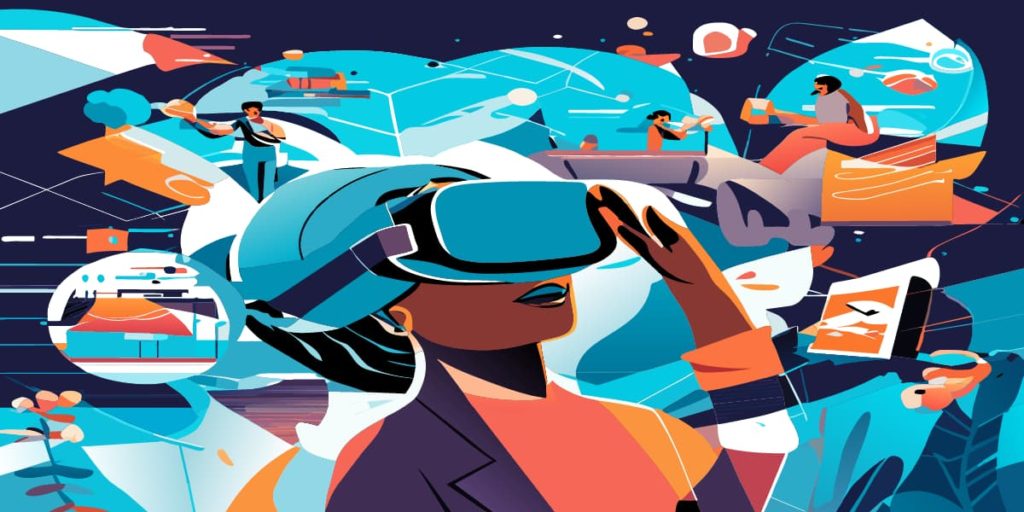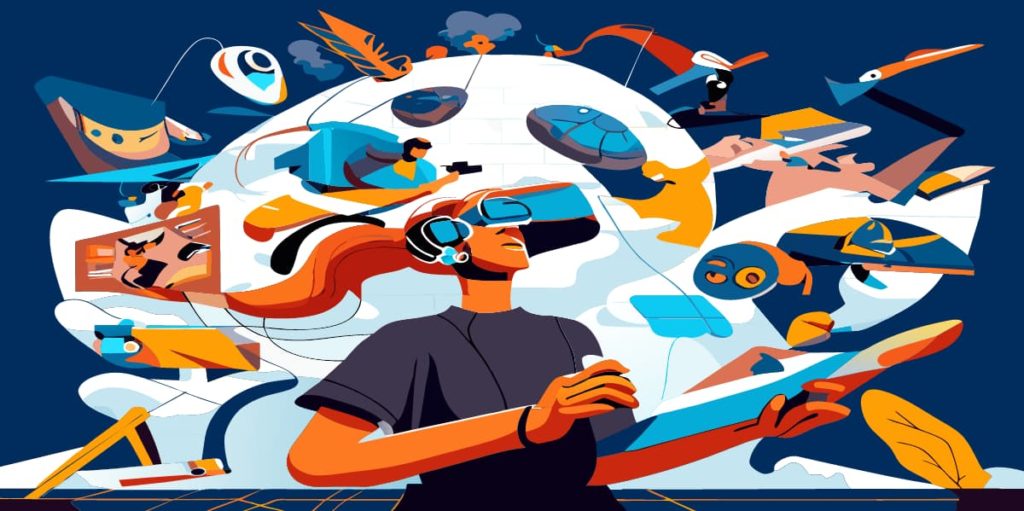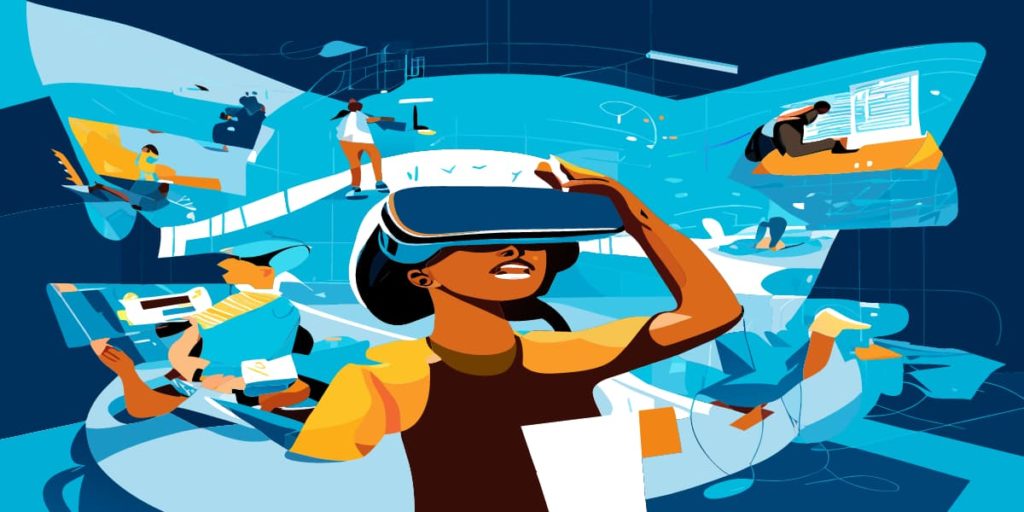Are you interested in learning about the intersection of instructional design and AI? With rapid AI and machine learning technology improvements, instructional designers are exploring new ways to create engaging and personalized learning experiences for diverse audiences with the help of AI.
Revolutionizing Education: How AI is Transforming Instructional Design
This article looks at the history and current state of instructional design and an introduction to AI and machine learning. You’ll also learn about the potential benefits and challenges of integrating AI and machine learning in instructional design and the ethical considerations that come with these technologies.
Discover how AI and instructional design can enhance learning outcomes and experiences.

Table of Contents
TL;DR: Instructional Design and AI
This blog post explores the transformative impact of AI and machine learning on instructional design. It delves into the history and evolution of instructional design, introducing AI and machine learning concepts. The article discusses the potential benefits, challenges, and ethical considerations when integrating AI into instructional design. It concludes by emphasizing the revolutionary potential of AI in creating personalized, adaptive, and engaging learning experiences.
Summary: Instructional Design and AI
“Exploring the Future: Instructional Design and AI” is a blog post that explores the transformative impact of AI and machine learning on instructional design. It begins by tracing instructional design’s historical development and crucial role in education. The article then introduces the concepts of AI and machine learning, highlighting their significance in transforming the field.
Case studies showcase the successful integration of AI in instructional design, emphasizing the benefits of personalization and efficiency. However, the blog post also recognizes the challenges educators and instructional designers face when incorporating AI, such as aligning AI systems with learning objectives and ensuring transparency and inclusivity.
The post concludes by emphasizing the potential of AI to revolutionize instructional design by creating personalized, data-driven, and efficient learning experiences. In particular, AI offers help and assistance in the course creation workflow and delivery. For example, AI can help quickly produce customized images, illustrations, or data tables, reducing the time spent searching for resources.
These AI-driven benefits streamline the course creation process, making it more efficient and effective for instructional designers. The potential for highly personalized, accessible, and data-driven learning experiences enhances the overall quality of eLearning.

The Current State of Instructional Design
- Brief history and evolution of instructional design
- Role and importance of instructional design in education
Instructional design is a systematic process of creating compelling and engaging learning experiences for various audiences and contexts. It involves analyzing the needs and goals of the learners, designing and developing instructional materials and activities, implementing and evaluating the outcomes, and revising and improving the design based on feedback.
The field of instructional design has a long and rich history. It traced back to the early 20th century when educational psychologists such as Edward Thorndike, John Dewey, and B.F. Skinner applied scientific principles and methods to the study of learning and instruction.
During World War II, the military and industry recognized the need for efficient and standardized training programs for soldiers and workers. They hired experts from various disciplines to design and develop instructional materials and methods. It marked the emergence of instructional design as a distinct profession.
Learn how to apply the ADDIE Model – Leading Questions Mindmap.
Since then, instructional design has evolved and expanded in education and technology. Some of the significant trends and developments that have influenced instructional design include:
- The cognitive revolution in the 1950s and 1960s shifted the focus from behaviourism to cognitivism, emphasizing the role of mental processes, strategies, and structures in learning and instruction.
- The constructivist movement in the 1970s and 1980s challenged the objectivist view of knowledge and learning and advocated for learner-centred, collaborative, and authentic learning environments that foster meaning-making and reflection.
- The advent of computers and the internet in the 1980s and 1990s opened up new possibilities and challenges for delivering instruction through various media and formats, such as computer-based instruction, multimedia, hypertext, hypermedia, simulations, games, virtual reality, and more.
- The emergence of new learning theories and models in the 1990s and 2000s, such as situated cognition, distributed cognition, social constructivism, and connectivism, emphasized the social, cultural, contextual, and networked aspects of learning and instruction.
- The rise of new technologies and trends in the 2000s and 2010s, such as mobile devices, cloud computing, big data, artificial intelligence, adaptive learning, personalized learning, gamification, etc., offered new opportunities and challenges for enhancing learning outcomes and experiences.
Learn more about Comparing Learning Theories – A Comprehensive Guide.
Instructional design plays a vital role in education by applying research-based principles and practices to create effective and engaging learning solutions that meet learners’ diverse needs and preferences. Instructional designers work in various settings and sectors, such as schools, colleges, universities, corporations, government agencies, non-profit organizations, and others, to design and develop courses, programs, curricula, modules, lessons, activities and assessments.
Instructional design and AI is a dynamic and evolving field that requires continuous learning and improvement. Instructional designers must keep abreast of the latest developments in learning theories, technologies, and trends and adapt their skills and strategies to meet learners’ and stakeholders’ changing demands and expectations.
Resources
- Technology in education | Global Education Monitoring Report (unesco.org)
- The Next Frontier In Instructional Design (forbes.com)
- Critical Instructional Design Trends [Recent Study] • Gitnux
- History of Instructional Design | Instructional Design Central (IDC)
- AI-enabled Personalized Learning for COVID Pandemic Recovery – K12 Digest

Introduction to AI and Machine Learning
- Basic explanation of AI and machine learning
- Different types of machine learning
- Real-world examples of AI and machine learning
Artificial intelligence (AI) and machine learning (ML) are two terms often used interchangeably, but they are not precisely the same.
AI is the broader field of study that aims to create machines or systems that perform tasks typically requiring human intelligence: reasoning, decision-making, perception, and natural language processing.
ML is a subset of AI that creates algorithms or models to learn from data and improve performance without explicit programming.
Different types of machine learning depend on how the algorithms or models learn from data. The main types are:
- Supervised learning: The algorithm or model is given labelled data, which means the input and the desired output are provided to map and predict new data.
- Unsupervised learning: The algorithm or model is given unlabeled data, which means only the input is provided. The goal is to discover patterns, structures, or hidden features in the data without any guidance. For example, an unsupervised learning algorithm can learn to cluster customers based on their purchase behaviour or find topics in a collection of documents.
- Reinforcement learning: The algorithm or model is not given any data but interacts with an environment and learns from its actions and feedback. The goal is to understand a policy that maximizes a reward function, which measures how well the agent performs in the environment. For example, a reinforcement learning algorithm can learn to play a video game by trial and error and improve its score over time.
AI and machine learning have many real-world applications in various domains: healthcare, education, finance, entertainment, and more. Some examples are:
- AI-powered assistants like Siri, Alexa, and Cortana understand natural language and perform user tasks.
- ML-based recommender systems like Netflix, Amazon, and Spotify can suggest products or content based on user preferences and behaviour.
- AI-enabled self-driving cars like Tesla, Waymo, and Uber can navigate complex traffic scenarios and avoid collisions.
- ML-enhanced facial recognition systems like Face ID, Facebook, and Snapchat can identify or verify people based on their faces.
- AI-generated content like GPT-3, DeepMind, and OpenAI can create text, images, music, or code based on user input or context.

The Intersection of AI/Machine Learning and Instructional Design
- Application of AI and machine learning in instructional design.
- Benefits of integrating AI and machine learning in instructional design
Artificial Intelligence (AI) and Machine Learning (ML) rapidly transform various sectors, including education. Instructional design, a critical aspect of education, is no exception.
AI and ML can be applied in instructional design in several ways. For instance, they can help create personalized learning experiences by analyzing individual learning patterns and tailoring content accordingly. This personalization can improve learning outcomes and a more engaging learning experience.
Moreover, AI can automate certain aspects of instructional design. For example, AI can generate quizzes based on the learning material or provide real-time feedback to learners, thereby reducing the workload of educators.
However, integrating AI and ML in instructional design is challenging. Rapid technological developments often outpace policy debates and regulatory frameworks. Therefore, it’s crucial to ensure that the core principles of inclusion and equity guide the application of AI in educational contexts.
UNESCO is discussing the potential of AI technologies for achieving the Education 2030 Agenda. They have developed a publication to foster the readiness of education policy-makers in artificial intelligence. This publication generates a shared understanding of AI’s educational opportunities and challenges.
In conclusion, while AI and ML hold great promise for instructional design, careful consideration must be given to ensure their ethical and equitable use. As we progress, publications like those from UNESCO will be invaluable resources for policy-makers, educators, and instructional designers.
References
- Artificial intelligence in education | UNESCO
- Guidance for generative AI in education and research | UNESCO
- UNESCO unveils new AI roadmap for classrooms | UN News
- Educational technology – Wikipedia
- 30 Examples Of Technology In Education (teachthought.com)
- What is Machine Learning – Definition, meaning and examples.
Case Studies
- Detailed examples/case studies of successful integration of AI in instructional design
- Lessons learned from these case studies
Sure, here are a couple of case studies that highlight the successful integration of AI in instructional design:
Case Study 1 – Adaptive Learning Platforms
AI and Adaptive Learning Cognota, an AI and adaptive learning platform, has been exploring the potential impact of AI on e-learning. They found that AI technologies can provide feedback on each learner’s needs, allowing instructional designers to focus on creating meaningful lessons.
This leads to a more thorough learning experience as the virtual instructor can pick up on the learner’s learning style and current knowledge level. The interaction allows for more complex forms of assessment and grading. The correct implementation of AI eliminates many guessing games for instructional designers when creating learning experiences.
AI and Adaptive Learning: The Future of Instructional Design – Cognota
Lessons Learned:
- AI can provide personalized feedback based on each learner’s needs.
- AI allows for more complex forms of assessment and grading.
- Implementing AI correctly can help instructional designers create more effective learning experiences.
Case Study 2 – AI-generated videos
AI-Generated Videos Elai Builder, a platform that creates AI-generated videos, has been exploring how these videos can impact instructional design. They found that using AI tools to automate tedious tasks and streamline collaboration can increase productivity. Additionally, AI allows instructional designers to reduce the time spent producing outlines and content. This leads to quicker and more efficient project completion.
How Can AI-Generated Videos Impact Instructional Design? (elai.io)
Lessons Learned:
- AI tools can automate tedious tasks and streamline collaboration.
- AI can reduce the time spent producing outlines and content.
- Implementing AI can lead to quicker and more efficient project completion.
These case studies demonstrate how AI can be successfully integrated into instructional design to improve efficiency and effectiveness. However, it’s important to remember that the successful implementation of AI requires careful planning and consideration.

Challenges for educators and Instructional Designers
- Potential challenges for instructional designers and educators
- Integrating AI in instructional design
- Integrating AI in Course Creation and Workflows
As Jeff Rubenstein, a Former Forbes Council member and Forbes Technology Council, pointed out, learning design has a significant problem.
Instructional design has traditionally focused its attention on the asynchronous portion of the learning experience: the content that learners interact with on their own time. There have been some great advances in recent years, especially in areas such as adaptive learning and the use of new tools like VR.
However, when it comes to the synchronous portion — the “in-class” part of learning — instructional designers have had less of a role. To some degree, this is due to the traditionally available tools (mostly online meeting platforms) that have been used for online instruction, which have not thought much about the role of IDs.
This makes it hard for the IDs to engage meaningfully with those tools and the instruction that occurs there.
[…] This has led to what I sense is a bit of a blind spot in thinking about ID, and an opportunity to open an entirely new frontier for this practice.
Jeff Rubinstein
In addition to this structural challenge, digital competencies play an increasingly bigger role in course design and delivery.
For instructors — while they may be experts on the material — are typically not experts at creating the objects that they will use inside of those virtual environments. They can usually create basic documents (e.g., PPT, Excel), but do they know how to make them accessible? Do they know how to create them so that they can be used effectively both inside the virtual teaching space and outside of it? Do they know what interaction models are available inside the virtual classroom and how to make the content interactive in that context? Can they make these documents beautiful?
Jeff Rubinstein
Artificial intelligence (AI) is transforming the world of education and learning. From personalized learning paths to adaptive feedback systems, AI offers many opportunities to enhance the quality and effectiveness of instruction.
However, AI poses potential challenges for instructional designers and educators who must integrate it into their instructional design and course creation workflows.
One of the crucial challenges of integrating AI in instructional design is ensuring that the AI system aligns with the course’s learning objectives, outcomes, and assessments.
AI systems are often designed to optimize a specific metric, such as learner engagement, retention, or performance. However, these metrics may only sometimes reflect the learners’ intended learning goals or desired skills and competencies.
Therefore, instructional designers and educators must carefully evaluate the AI system’s alignment with the course’s purpose and scope and make necessary adjustments or modifications.
Another challenge of integrating AI in instructional design is ensuring the AI system is transparent, explainable, and trustworthy. AI systems are complex, making it difficult for instructional designers and educators to understand how they work, why they make certain decisions or recommendations, and how they handle data and privacy.
Therefore, instructional designers and educators must seek AI systems that provide clear and accessible explanations of their processes, outputs, and limitations and adhere to ethical principles and standards.
A third challenge of integrating AI in instructional design is ensuring that the AI system is inclusive, diverse, and equitable. AI systems are often influenced by the data they are trained on, which may contain biases, stereotypes, or inaccuracies.
This can result in AI systems that are unfair, discriminatory, or harmful to certain groups of learners or stakeholders. Therefore, instructional designers and educators need to critically examine the data sources and methods used by the AI system and ensure that they represent a diverse range of perspectives and contexts.
Integrating AI in instructional design and course creation workflows can be a daunting task, but it can also be a rewarding one. By being aware of the potential challenges and adopting some strategies to address them, instructional designers and educators can leverage the power of AI to create engaging and meaningful learning experiences.
Resources:
- The challenges and opportunities of Artificial Intelligence in education | UNESCO
- Instructional Design Challenges for Today’s Course Designer | The Rapid E-Learning Blog (articulate.com)
- [2303.00192] Exploring Challenges and Opportunities to Support Designers in Learning to Co-create with AI-based Manufacturing Design Tools (arxiv.org)
- 6 AI Implementation Challenges And How To Overcome Them (elearningindustry.com)
- Integrating AI Innovations in Education: Potential Uses and Challenges (noodlefactory.ai)
- AI In The Classroom: Benefits, Challenges, And Best Practices (elearningindustry.com)

The Future of Instructional Design with AI and Machine Learning
- Predictions for the future
- Emerging trends in the field
- Ethical Considerations in the Use of AI in ID
What are emerging trends in Instructional Design?
In the dynamic realm of education, staying ahead of the curve is paramount. As instructional design continues to be a cornerstone of effective learning, it’s essential to keep a finger on the pulse of emerging trends.
In this chapter, we’ll provide a concise overview of these trends, offering a glimpse into the exciting developments shaping the field of instructional design. From video-based learning to adaptive technologies and innovative approaches, we’ll highlight the key trends propelling educational experiences into the future.
- Video-Based Learning: Incorporating video content into instructional design allows learners to consume and retain complex information through visual storytelling easily.
- Mobile Learning: `As smartphones become increasingly prevalent, instructional design is adapting to create mobile-friendly courses easily accessible on various devices.
- Gamification: Incorporating game elements, such as challenges, rewards, and leaderboards, into instructional design makes the learning experience more enjoyable and engaging for learners.
- Competency-Based Learning: Focusing on acquiring specific competencies or skills instead of just completing courses, allowing learners to progress at their own pace and ensuring mastery of the material.
- Microlearning: Breaking down content into bite-sized, easily digestible chunks allows learners to retain information better and engage with the material at their own pace.
- Adaptive Learning: Personalized learning experiences that adjust to individual learners’ needs and progress, allowing for a more tailored instruction that enhances understanding and retention.
- Project-Based Learning: Incorporating real-world projects and problem-solving activities into instructional design allows learners to apply their knowledge in practice, enhancing understanding and retention.
- Social Learning integrates social media and online forums into instructional design and encourages discussion, collaboration, and sharing of ideas among learners.
- User-generated Content: This trend encourages learners to contribute their content, fostering a sense of ownership and engagement
- Learning Experience Platforms (LXPs) provide personalized and collaborative learning experiences through platforms incorporating features like social media, Al, and analytics.
- AR And VR: Incorporating AR and VR into instructional design offers immersive, hands-on experiences that can enhance learning outcomes.
- Al And Machine Learning: Al-powered platforms can provide personalized learning experiences, analyze learner data, and allow instructional designers to create more effective courses.
- Learning Analytics: Analysing learner data to identify trends and patterns can help instructional designers improve course content and delivery, making them more effective.
- Blended Learning: Combining online and offline instructional methods, such as e-learning modules and face-to-face workshops, provides a balanced approach and caters to different learning styles.
- Inquiry-Based Learning: Encouraging learners to explore the content through questioning, experimentation, and problem-solving, which promotes critical thinking and deeper understanding.
- Accessibility And Inclusive Design: Ensuring that courses and materials are designed with all learners in mind, including those with disabilities, to provide equal opportunities and remove barriers to learning.
- Scenario-based learning involves learners working through real-world scenarios to enhance their problem-solving skills.
- Soft Skills: Organizations focus on developing soft skills that improve team collaboration and help employees perform better.
- Social and Emotional Learning (SEL): This involves teaching skills such as empathy, self-awareness, and emotional regulation
How can AI help educators and instructional designers?
AI has the potential to revolutionize the field of instructional design. It streamlines the entire design process, from content creation to implementation and evaluation, making it significantly more efficient and effective. In addressing instructional designers’ challenges, AI simplifies their task of crafting engaging, learner-centred content.
Learn more about the use of AI in instructional design in my AI challenges:
- Which AI is Best for Generating Learning Objectives?
- The best AI for Generating a Rubric
- Creating Effective Learning Objectives with AI: A Step-by-Step Guide
Here are some of the critical impacts of AI in instructional design:
- Automated Content Creation: AI algorithms offer suggestions for relevant learning resources and materials based on learner analytics. Additionally, AI can aid in generating instructional content, including quizzes, assessments, and interactive elements. This alleviates the burden on instructional designers, allowing them to focus on their strengths—innovation and creativity.
- Natural language processing (NLP): Language processing tools like Grammarly or chatbots can help instructional designers and educators improve the clarity and accessibility of learning content.
- AI-Enhanced Tools for Advancing Instructional Design: Image-generating tools can benefit course creators. Instead of browsing through stock photos and Creative Commons sources, AI can help to produce customized images, illustrations or data tables quickly.
- Personalization at Scale: Creating personalized learning journeys has long been a goal in instructional design, and AI can help make it a reality. AI algorithms analyze vast amounts of learner data, encompassing preferences, needs, and performance metrics. These learning analytics enable designers to construct personalized learning pathways that enhance engagement and knowledge retention. Learners are naturally more motivated by content that resonates with them individually.
- Accessibility Support: AI plays a pivotal role in developing content that is inclusive and accessible to all learners. AI tools automatically identify and address potential accessibility issues. Building trust with learners is essential for effective eLearning, and ensuring accessibility is a critical aspect of this trust.
- Data-Driven Decision-Making: AI’s capacity to analyze extensive datasets related to learner performance and behaviour has a profound impact. The insights generated by AI assist in recognizing patterns, strengths, weaknesses, and areas for improvement in instructional design. This simplifies reviewing, evaluating, and refining content to align with learning objectives continually.
In summary, AI is a game-changer in instructional design, offering the potential for highly personalized, accessible, data-driven, and efficient learning experiences. It empowers instructional designers to create content that truly resonates with individual learners while automating routine tasks and enhancing the overall effectiveness of eLearning.
Resources:
- Transforming Learning: The Latest Trends in Instructional Design – eLearning (adobe.com)
- Trustworthy artificial intelligence (AI) in education: Promises and challenges | en | OECD
- Artificial Intelligence in education: challenges and opportunities | ESEP (Europa.eu)
- The Five Biggest Education And Training Technology Trends In 2022 (forbes.com)
- Generative AI: How will it affect future jobs and workflows? | McKinsey
- The Intersection of AI and Instructional Design: Enhancing Learning Experiences (digitallearninginstitute.com)
- The Future of Learning: AI-powered Instructional Design | by Timothy M. Stafford, PhD | ID&T Confidential | Medium
- Everyone in Your Organization Needs to Understand AI Ethics (hbr.org)
- Revolutionize Course Creation with AI: Unlocking Efficiency and Excellence | by Kevin Doherty | Sep 2023 | Medium

Conclusion – Instructional Design and AI
The instructional design field will be revolutionized with the help of AI and machine learning. AI helps instructional design by offering new ways to analyze, design, develop, implement, and evaluate learning experiences. By leveraging AI and machine learning, instructional designers can create personalized, adaptive, and interactive learning solutions that cater to learners’ diverse needs, preferences, and contexts.
However, adopting and integrating AI and machine learning in instructional design requires careful consideration of ethical, social, and technical issues, such as privacy, bias, transparency, and usability. Therefore, instructional designers must collaborate with experts from different fields and continuously learn and reflect to ensure their designs are practical, engaging, and ethical.
We’re eager to hear your thoughts and insights on how AI transforms learning. Do you see AI as a game-changer in instructional design?
Please share your opinions and experiences with us in the comments below, and let’s spark a conversation about the future of education!
